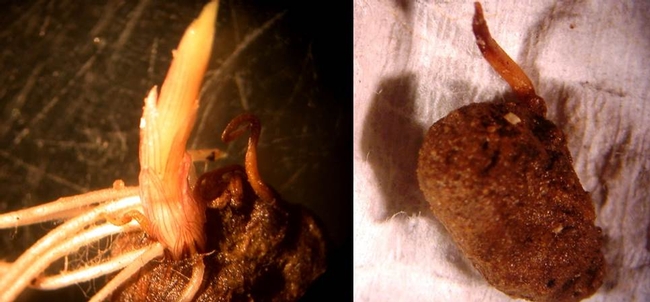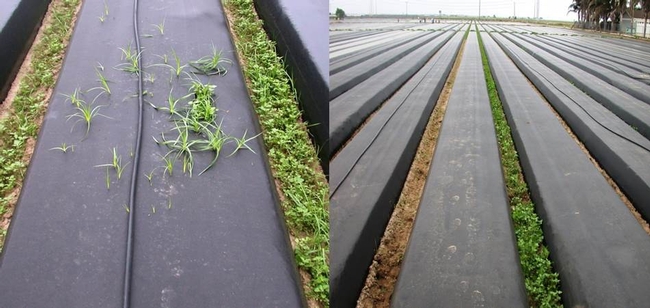- Author: Oleg Daugovish
You may have heard about ASD (anaerobic soil disinfestation) as ‘biological alternative to soil fumigation'. This is the practice of adding easily degradable carbon sources to soil and developing anaerobic conditions under plastic mulch in moist soils for 3-5 weeks. Then the aeration is provided by cutting holes in plastic and you are ready to plant. The mechanism of action is a mix various processes: anaerobiosis itself, reduction in pH, development of volatile compounds, changes in microbiology and physical properties of soil and, of course, substantial increase in nitrogen that usually comes along with the incorporated carbon sources. The end result is pathogen suppression, big yield improvements compared to untreated soil and rapid adoption by organic growers. But what about the weeds?
In 2007 we took a look at ASD with 9 t of rice bran/acre under clear plastic mulch in a very weedy site, something that even bravest organic growers would discourage. Anaerobic conditions developed well as expected and we saw a lot fewer weeds compared to untreated plots. In fact during three weeding operations (pulling weeds from under plastic via small planting holes, which requires flexible wrists) we had 55%, 68% and 90% fewer broadleaf weeds in ASD plots and we spent a lot less time weeding them compared to untreated checks. Last year we used opaque mulch and after ASD saw >90% reduction in weed number in planting holes where competition with crop is most critical. The weeds that remained in ASD plots were field bindweed (not a surprise) and those with wind dispersed seed (annual sowthistle and common groundsel) suggesting that this technology was effective against annual broadleaf weeds germinating from soil seed bank.





I also want to remind everyone that 9 tons of rice bran at 6% N w/w is a lot of nitrogen.
We have been working on ASD for over 5 years - it clearly has some beneficial effects, but it also fails frequently in heavy soils and under heavy disease pressure. ASD fails frequently on macrophomina. We have ASD, but what do we have - it certainly is not a disinfestant, a "kill step".
Do you have any idea how deep this might penetrate? Would the addition of a Brassica produce a greater fumigant effect? Lastly any thoughts on how effective this might be on riparian/aquatic species in dry aquatic sites? I would assume aquatics are naturally adapted to more anaerobic conditions. For Hydrilla eradication are always looking for a replacement to soil fumigation which is a tool we've lost in aquatic settings.
Good points; the warmer soil temperatures in the southern CA and FL during ASD process improve efficacy, which declines dramatically at T < 70 F. That was a problem in Netherlands where ASD was developed - not enough heat units to do both: ASD and then grow the crop. ASD is not going to control all pests and pathogens in soil; I see it a temporary modification of soil environment that may allow you to grow a more productive crop compared to no treatment (which is usually the case in organic fields). The chemical fumigants that are currently available at the rates and methods that we can use in CA often fail miserably too. Nitrogen release is something we need to monitor closely with various C-sources but it can serve as a pre-plant fertilizer.
David:
We found that distribution of carbon, liquid or solid is important, just like with fumigants, – so if there are areas in soil/bed that did not get enough there will be no ASD effect. Several studies looked at including Brassica seed meal (because of its biocide potential) as part of ASD with variable success, likely due to complexity of related processes that take place: direct toxicity from generated ITCs, changes in soil microbiology, N and pH changes that may be soil dependent. And in CA these meals are rather expensive and I think that limits their use. Aquatic weeds may be tough (they do survive flooding and generates anaerobic conditions) and potential for leaching of N into environment is high in riparian zones. I like to try things on small scale first (even in pots = ideal mixing and T) and it looks promising consider how it can be realistically scaled up.